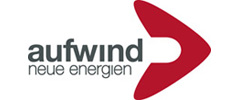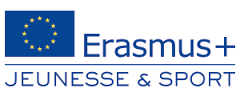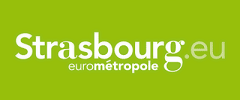Testing confirms that toys sold on the EU market still contain chemicals of concern
On November 10th and 16th, WECF organized 2 events in France and the Netherlands to raise awareness on chemicals of concern in toys
16.11.2011 |WECF Press Release
On November 10th and 16th, WECF (Women in Europe for a Common Future) organized 2 events in France and the Netherlands to raise awareness on chemicals of concern in toys. WECF also releases results of tests made on 29 toys sold in the Netherlands, France and Germany. Even if not representative of the global toys market, the tests give information on some of the hazardous chemicals which can be found in toys placed on the EU market. The road towards healthy toys still seems to be long.
A banned phthalate found in a product sold in a toys shop
A paint apron sold in a Dutch toys department store was found to contain 578 mg/kg of DEHP, a phthalate (plasticizer) banned in toys and children articles, one of the most controversial chemicals mentioned by RAPEX, the EU rapid alert system on hazardous consumer products [1]. The other tested products did not show traces of phthalates.
Formaldehyde in wooden toys
Wooden toys are often considered safer than others. But high quality wooden toys made of non treated raw wood differ from chipboard articles. Out of 5 tested products, 3 are below or very close to formaldehyde detection limit. A puzzle for children above 2, sold in France, shows a much higher concentration of 1.25 mg/L. Formaldehyde, classified at international level as “carcinogenic to human” [2] and identified as priority substance by WHO [3] should not be found in toys.
Heavy metals (lead, cadmium, barium, nickel) in jewelry and make-up articles
Whether sold in toys department stores or in accessories shops, jewelry and make-up articles are among favorite young children’s products. 2 out of 3 make-up sets tested appear to contain barium, in a quantity close to 150 mg/kg for the one sold in France – still below the threshold of the new toys safety regulation[4]. Jewelry tested show the combined presence of lead (a neurotoxicant ), nickel (known allergen) and cadmium. Such products, which may be placed in the mouth by young children, should not contain such toxic cocktails.
In France, a lip gloss was found to contain benzophenone-3, a UV-filter cosmetic ingredient considered as potential endocrine disrupter by the French Agency for Safety of Health Products (AFSSAPS) and “not recommended for use by children until 10 in cosmetics products in a concentration above 6%”[5] ». These children cosmetics products cannot be considered safe: they still contain ingredients known as allergenic substances, endocrine disrupters, and heavy metals. Potential use by young children should urgently be taken into account during the formulation of these products.
Electromagnetic fields (EMF) and toys : an emerging issue
On November 16th , besides the testing of certain chemicals in toys, WECF France will give the opportunity to the general public to test toys emitting EMF and present its new pocket guide on this issue, at a time when an international conference on EMF and health is being held in Brussels[6] on this emerging health issue. MEPs Corinne Lepage and Michèle Rivasi, which support WECF ‘s actions towards a better health and environment European policy, will participate to the event.
- http://ec.europa.eu/consumers/dyna/rapex/rapex_archives_en.cfm
- International Agency for Research on Cancer, http://monographs.iarc.fr/ENG/Monographs/vol88/volume88.pdf
- World Health Organisation
- The provisions on chemicals elements of the new Toys safety directive will enter into force in July 2013.
- AFFSAPS opinion (French), http://www.afssaps.fr/Infos-de-securite/Points-d-information/Utilisation-de-la-benzophenone-3-dans-les-produits-cosmetiques-Avis-de-l-Afssaps-Point-d-information
- http://ec.europa.eu/health/electromagnetic_fields/events/ev_20111116_en.htm, Conference on Electromagnetic Fields and Health during which Dr. Annie J. Sasco, Cancer epidemiologist, will represent WECF.
For more information on the event and background documentation, contact:
Elisabeth Ruffinengo
elisabeth.ruffinengo@wecf.eu
04 50 49 97 38 / 06 74 77 77 00
To learn more about WECF's toys events, please read:
- Spelbrekers - Lieve Sint, koopt u dit jaar geen spelbrekers. Koop gifvrij! (in Dutch)
- Spoilsports! Chemicals of concern in toys (in English)
- 16 novembre 2011/Nouveau guide Champs électro-magnétiques (in French)
Related News
No country in the world completely protects its citizens against dangerous chemicals in products, says WECF’s executive director in Indian Consumer
Sascha Gabizon draws attention to hazardous chemicals that can be found all over the world and in the Indian market specifically.
11.07.2013 | WECF
WECF: More than 30,000 signatures to ‘Stop EDCs in toys’
On 9 April Women in Europe for a Common Future in France (WECF) delivered their petition "Stop endocrine disruptors in toys" signed by more than 30,000 people, to French Health and Environment Ministers
11.04.2013
Rio+20 Side Event: "Protecting Our First Environment"
Protecting women’s health and future generations from harmful environmental impacts was the topic of the event organised by WECF, IPEN and members of the Women’s Major Group today at Barra Arena at the Rio+20 conference.
14.06.2012 | WECF news from Rio+20
Videos: Safe Toys for Safe Childhood
Watch videos on Toys Safety "Zdrave Igračke za Zdravo Detinjstvo"
01.12.2011 | WECF
Testing confirms that toys sold on the EU market still contain chemicals of concern
On November 10th and 16th, WECF organized 2 events in France and the Netherlands to raise awareness on chemicals of concern in toys
16.11.2011 | WECF Press Release






































